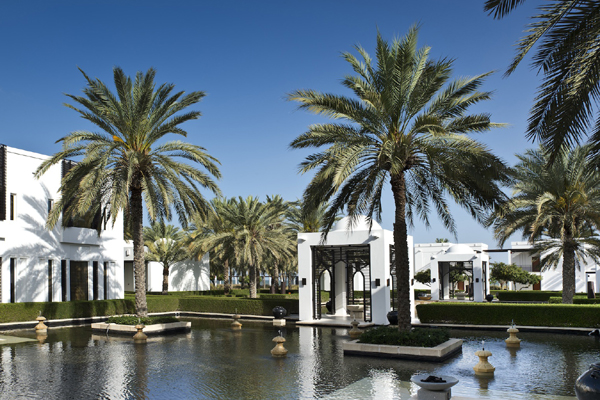
Oman's residential rental rates down 2.3pc in Q3
MUSCAT, November 13, 2016
The average residential rental rates in Oman fell by a further 2.3 per cent during the third quarter mainly due to the negative impact from the evolving demand dynamics in the market, said a report
With continued stagnation across Oman’s residential and office market during the third quarter, rapid expansion in the hospitality sector is set to be a beacon of growth in the market heading into 2017, according to new research by international real estate consultancy, Cluttons.
Significant growth in the Omani tourism sector is feeding a period of exponential development in the four and five-star hotel market, stated Cluttons in its Winter 2016/17 Property Market Outlook report for Muscat.
Over the next two years, hotels currently under construction will deliver a 50 per cent increase in room supply to the premium segment of the market, it added.
On the residential market, the property expert said the average rent fell sharply leading to a total decline of 8.1 per cent for 2016. On an annual basis, the weakest performing residential submarket was Shatti Al Qurum, where rents fell 21.1 per cent, followed by Sur Al Hadid (20.8 per cent) and Qurum (17.9 per cent).
On a more positive note, during the third quarter rents remained unchanged in two submarkets, Bausher and Sur Al Hadid, stated Cluttons in its report.
In the case of both villas and apartments however, the rate of rental decline appears to have moderated in the third quarter, following a challenging summer. This was of course exacerbated by the onset of Ramadan.
This together with the underlying weakness in the economy has meant that the summer months were amongst the quietest experienced by the market in recent years, stated Cluttons in the report.
Still, the weakness in the residential rental market has persisted for well over a year now with demand gradually ebbing over the course of 2016, driven by widespread redundancies that have now extended well beyond the oil sector, it added.
Philip Paul, the head of Cluttons at Oman said: "While the local residential and office markets are feeling the burden of economic challenges, Muscat remains a highly attractive tourist destination within the Gulf and investors have taken note. The significant increase in supply we're anticipating will result in a more competitive market from an operator perspective but will also provide an increase in choice for customers."
"We expect this will help to drive the continued growth in the tourism and hospitality sector, with other operators drawn in by the allure of a rapidly emerging market," observed Paul.
“Although we see significant opportunities within the hospitality sector, the outlook is less positive for the residential and office markets with a number of factors impacting performance. The volatility caused by low oil prices has had a knock on effect on the number of professionals working in the Sultanate; but redundancies have now spread well beyond the oil sector. This in turn has heavily impacted the demand for real estate,” he added.
The property expert said Al Mouj remained a residential stronghold with rents down just 5.9 per cent over the last 12 months, standing at an average of RO800 (2,071) per month.
This market remains unique in Muscat and the ever expanding retail and hospitality offering in this Integrated Tourism Complex has translated into a near steady stream of requirements from both buyers and tenants.
Similarly, Cluttons expects the new 615 unit Taminat residential scheme in Bausher, by the Public Authority for Social Insurance, which will be delivered to market in early 2017, to also command strong interest due to its mixed use offering and central location near three of Muscat's largest shopping malls.
For the rest of the residential market, Cluttons still predicts further corrections.
Faisal Durrani, the head of research at Cluttons, said: "The prospects for an immediate turn around in the residential market remain unlikely and, given the country’s heavy reliance on the oil and gas sector, outlook for the residential market remains weak."
"During spring we forecast residential rents to end the year 10 to 15 per cent down overall and it appears we are on track to achieve that, reflecting the average decline in tenants’ budgets of 10 to 20 per cent that we have recorded this year," observed Durrani.
"More positively, the government is clearly working hard behind the scenes to drive more efficient spending, while at the same time undertaking sentiment boosting mega projects such as the recent tendering for the first phase of Oman Rail and the progression of works related to the $1.3 billion redevelopment of Mina Sultan Qaboos," he stated.
"Projects such as these bode well for future demand for residential property, but for now, the outlook remains subdued," he added.
On the office market, Cluttons said there had been no quarterly change in rents across the six submarkets monitored during the third quarter.
On an annual basis, Qurum and Shatti Al Qurum stand out as relatively stable markets with no change in rents over the last 12 months. These two submarkets appear to be the most desirable due to a high concentration of Grade A office stock, which remains in finite supply.
"Having previously forecast minimal rent declines in the office market for 2016, due to record lows and rates that are lower than other comparable Gulf markets, Cluttons’ view remains unchanged, with any downward corrections over the next 6 to 12 months expected to be contained to RO0.50 per sq m," stated Durrani.-TradeArabia News Service







